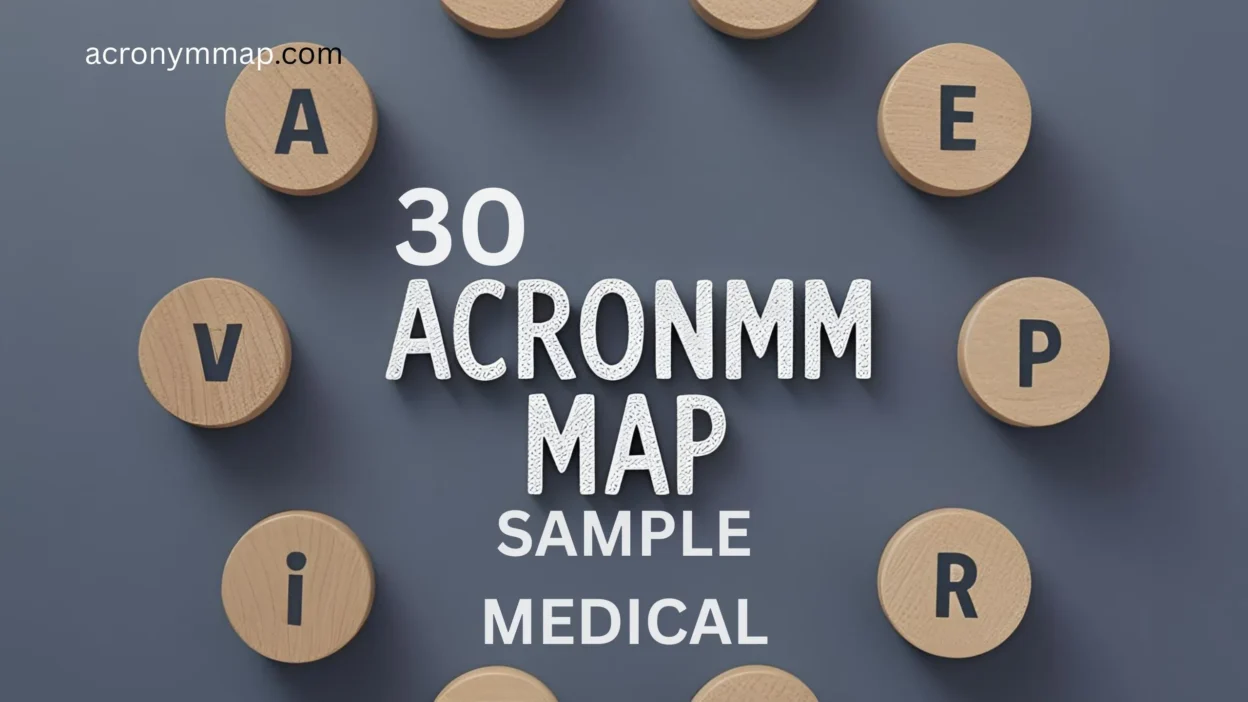When we hear the term “sample medical acronym”, we often picture a string of letters that stand for complicated medical phrases—shortcuts used by doctors, nurses, pharmacists, and other healthcare professionals. These acronyms help save time, ensure clarity, and maintain accuracy in patient records, prescriptions, and communication.
Whether you’re a medical student, a healthcare worker, or just someone trying to decode a hospital chart, understanding these acronyms can make medical communication far less intimidating.
Below, you’ll find 30 common sample medical acronyms with their meanings, examples, and tips on when to use them—plus guidance on how to choose the right term depending on tone, audience, and context.
🩺 30 Sample Medical Acronyms, Meanings, and Usage
1. BP
Meaning: Blood Pressure
Example: The nurse checked the patient’s BP every hour.
When to use: Everyday clinical settings to monitor cardiovascular health.
2. HR
Meaning: Heart Rate
Example: Her HR increased after climbing the stairs.
When to use: Vital signs documentation and fitness monitoring.
3. CBC
Meaning: Complete Blood Count
Example: The doctor ordered a CBC to check for anemia.
When to use: Laboratory test results and diagnostic discussions.
4. IV
Meaning: Intravenous
Example: The patient received fluids via an IV line.
When to use: When referring to medications or fluids given directly into a vein.
5. ECG / EKG
Meaning: Electrocardiogram
Example: An ECG was performed to monitor heart rhythm.
When to use: Cardiology, emergency care, or pre-surgical checks.
6. MRI
Meaning: Magnetic Resonance Imaging
Example: The MRI revealed no signs of brain injury.
When to use: Radiology imaging and diagnostic discussions.
7. CT
Meaning: Computed Tomography
Example: A CT scan of the abdomen was ordered.
When to use: Advanced imaging diagnostics.
8. O2 Sat
Meaning: Oxygen Saturation
Example: His O2 Sat dropped below 92% during the night.
When to use: Monitoring respiratory health.
9. BMI
Meaning: Body Mass Index
Example: Her BMI indicated she was within a healthy weight range.
When to use: Health assessments and nutrition discussions.
10. PT
Meaning: Physical Therapy / Prothrombin Time (depends on context)
Example: PT sessions improved his mobility after surgery.
When to use: Rehabilitation or lab test results—clarify in writing.
11. OT
Meaning: Occupational Therapy
Example: The OT program helped her return to daily activities.
When to use: Rehabilitation plans.
12. ICU
Meaning: Intensive Care Unit
Example: The patient was transferred to the ICU for close monitoring.
When to use: Critical care settings.
13. ER
Meaning: Emergency Room
Example: He was rushed to the ER after the accident.
When to use: Urgent medical care descriptions.
14. PRN
Meaning: As Needed (from Latin “Pro Re Nata”)
Example: Take this medication PRN for pain.
When to use: Medication orders and prescriptions.
15. NPO
Meaning: Nothing by Mouth (from Latin “Nil Per Os”)
Example: The patient was kept NPO before surgery.
When to use: Pre-operative or diagnostic preparation.
16. DOB
Meaning: Date of Birth
Example: Verify the patient’s DOB before administering medication.
When to use: Patient identification.
17. Dx
Meaning: Diagnosis
Example: The Dx was confirmed as pneumonia.
When to use: Medical chart notes.
18. Rx
Meaning: Prescription / Treatment
Example: The doctor wrote an Rx for antibiotics.
When to use: Pharmacology and patient care.
19. Tx
Meaning: Treatment / Therapy
Example: The Tx plan includes surgery and follow-up rehab.
When to use: Care planning and charting.
20. Hx
Meaning: History
Example: The patient’s Hx includes diabetes and hypertension.
When to use: Documenting medical history.
21. Fx
Meaning: Fracture
Example: X-rays showed a left wrist Fx.
When to use: Orthopedic care.
22. Sx
Meaning: Symptoms
Example: The Sx included fever and chest pain.
When to use: Symptom documentation.
23. Px
Meaning: Prognosis / Physical Exam (depends on context)
Example: The Px was favorable after treatment.
When to use: Future outlook or examination notes.
24. DNR
Meaning: Do Not Resuscitate
Example: The patient has a DNR order in place.
When to use: End-of-life care planning.
25. BLS
Meaning: Basic Life Support
Example: All nurses are trained in BLS.
When to use: Emergency response training.
26. ALS
Meaning: Advanced Life Support
Example: Paramedics provided ALS en route to the hospital.
When to use: Critical emergency interventions.
27. CPR
Meaning: Cardiopulmonary Resuscitation
Example: CPR was started immediately after collapse.
When to use: Emergency lifesaving measures.
28. NGT
Meaning: Nasogastric Tube
Example: The patient was fed via NGT.
When to use: Nutritional support.
29. UA
Meaning: Urinalysis
Example: A UA was ordered to check for infection.
When to use: Laboratory diagnostics.
30. WBC
Meaning: White Blood Cell count
Example: Her WBC was elevated, indicating possible infection.
When to use: Blood test results and immune health.
🎯 How to Choose the Right Acronym
- Audience matters: Use full terms with patients, but acronyms with medical professionals.
- Avoid confusion: Some acronyms have multiple meanings (PT = Physical Therapy or Prothrombin Time). Clarify when needed.
- Context is key: ER vs. ICU have specific care levels—don’t swap them casually.
- Clarity first: In high-stakes environments, always confirm meaning to avoid dangerous mistakes.
🩺 Final Thoughts
Medical acronyms are like a language within a language—precise, quick, and effective when used correctly. But they also carry responsibility: clarity and accuracy save lives.
By learning these 30 sample medical acronyms and knowing when to use them, you’ll navigate the healthcare world with more confidence—whether you’re charting, translating for a patient, or studying for an exam.
Just like medicine itself, it’s all about the right action at the right time.

